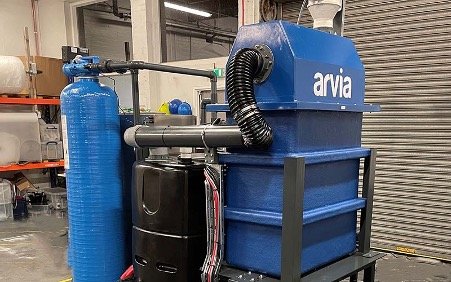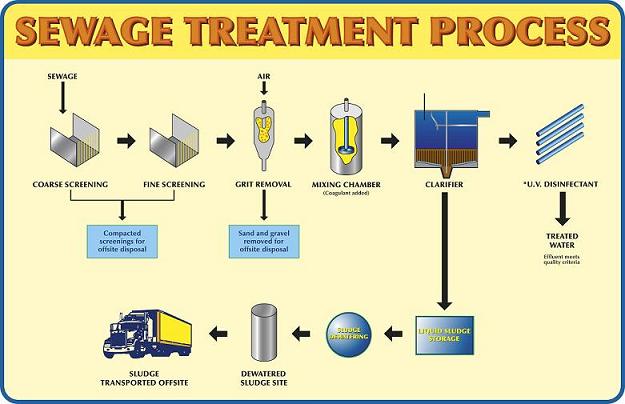3 Easy Facts About Residential Water Treatment System Explained
Table of ContentsFacts About Residential Water Treatment System UncoveredThe Ultimate Guide To Residential Water Treatment SystemWhat Does Residential Water Treatment System Do?Residential Water Treatment System Can Be Fun For Anyone

on the various other hand, originates from production, industrial as well as business tasks brought as well as has an entirely different structure than sewage water. How does it function? The initial step in this water therapy plant is that the wastewater drains pipes to the plant with the aid of gravity via the major sewer system.
In this phase, the water moves through the crushed rock chamber to remove any kind of grit. The gravel is then dealt with at the dump. The water then relocates to the bar displays which remove big things. These are training course displays. Next off, the great displays get rid of smaller sized items such as undigested foods, or suits, and so on.
In this phase, the water streams to the main settling containers, likewise recognized as pre-settling basins. These tanks have receptacles which are situated in the base of the tank where water moves via.
Residential Water Treatment System Fundamentals Explained
These clearing up containers allow the sludge to clear up and afterwards relocates to food digestion storage tanks. In the digestion tanks, the sludge is heated as well as mixed. One more important point that occurs here is the production of biogas, which the wastewater treatment plants can reuse, in the manufacturing of electric or thermal power which is an additional significant benefit to the atmosphere.

The last action in wastewater therapy is assessment. This examination involves examining the contamination level of the water treated as well as making certain it abides by the greatest standards in order to be launched or recycled for residential or industrial functions. residential water treatment system. Applications: Most oil refineries or petrochemical as well as chemical sectors create a huge amount of wastewater and call for on-site wastewater treatment plants.
The wastewater below moves via displays and also right into settlement basins that can obtain particles in large amounts. It works as a pre-treatment as mentioned over as it happens before three even more hostile stages- primary, secondary as well as tertiary treatment. Primary Treatment During this stage, the wastewater moves into the clarifiers.
Facts About Residential Water Treatment System Uncovered
It is the layout of these storage tanks that result in working out, that is, the organic solid matter collects at the end of the container while the lighter matter drifts to the leading becoming simpler for elimination. The organic matter click resources that clears up at the bottom is understood as a primary sludge covering.
Additional Treatment This therapy phase consists of aerobic aeration. Oygenation basins contain aerators, these have a system of pipes or tubes affixed to them. They are constructed from ceramic or rubber membranes that have small holes in them for air to pass through. When this air streams via the aerators, the small openings existing, turn them right into bubbles and they obtain blended with the water column.
This RAS goes back right into the main information container and the bacteria in it assists in breaking down any kind of raw material in the sewage. When RAS has entirely undergone both the primary and also secondary clarification containers continually, i. e numerous times, it is become waste-activated sludge (WAS). The WAS then does not return to the primary clarification storage tank yet instead transfers to the covered containers, also referred to as cardio sludge digesters.
The remaining sludge moves to the dewatering facility that contains dewatering tanks where the plant makes look what i found use of belt presses to squeeze any type of staying water out of the sludge. Tertiary Treatment Tertiary treatment follows the process of both primary as well as secondary procedures yet also furthermore involves mechanical and photochemical procedures.
Top Guidelines Of Residential Water Treatment System
Here the focus is offered to physical click over here now methods such as screening, sedimentation, purification, clarification etc. The purpose of this is to get rid of as much strong physical issues as possible before sending out the effluent for more therapy. This stage involves the elimination of solid waste and raw material. Below chemicals are added to damage down any type of solid and also chemical waste.
There are two types of resins- one is an anion one while the other is a cation one. These former materials release hydroxyl ions which are negatively charged while the cation materials launch hydrogen ions that are positively charged. The cation-exchange materials lead to conditioning of water, the anion-exchange lead to the removal of nitrate from wastewater as well as the mix of both the anion and cation exchange gets rid of essentially every ionic contaminant existing in the feed water with a process called deionization (residential water treatment system).
Applications: Demineralization brings about the complete elimination of minerals from the water as well as is typically used in markets that call for water with high levels of purity, as an example- make-up or feed water in high-pressure central heating boilers, the food and also beverage industry, and procedure streams used in the production of electronic devices. They are likewise made use of in sectors for the generation of steam, power and cooling.
Reverse Osmosis (RO) Water Treatment The concept of reverse osmosis (RO) operates on the purification approach that leads to the removal of a a great deal of impurities as well as impurities from wastewater by using pressure to it when it is on one side of a membrane. How does it work? This water treatment plant works by utilizing a high-pressure pump that boosts the stress on the salt side of the RO and also forces the water across the semipermeable RO membrane (which enables some atoms and also particles to pass yet not others), leaving nearly 95%-99% of dissolved salts in the decline stream.